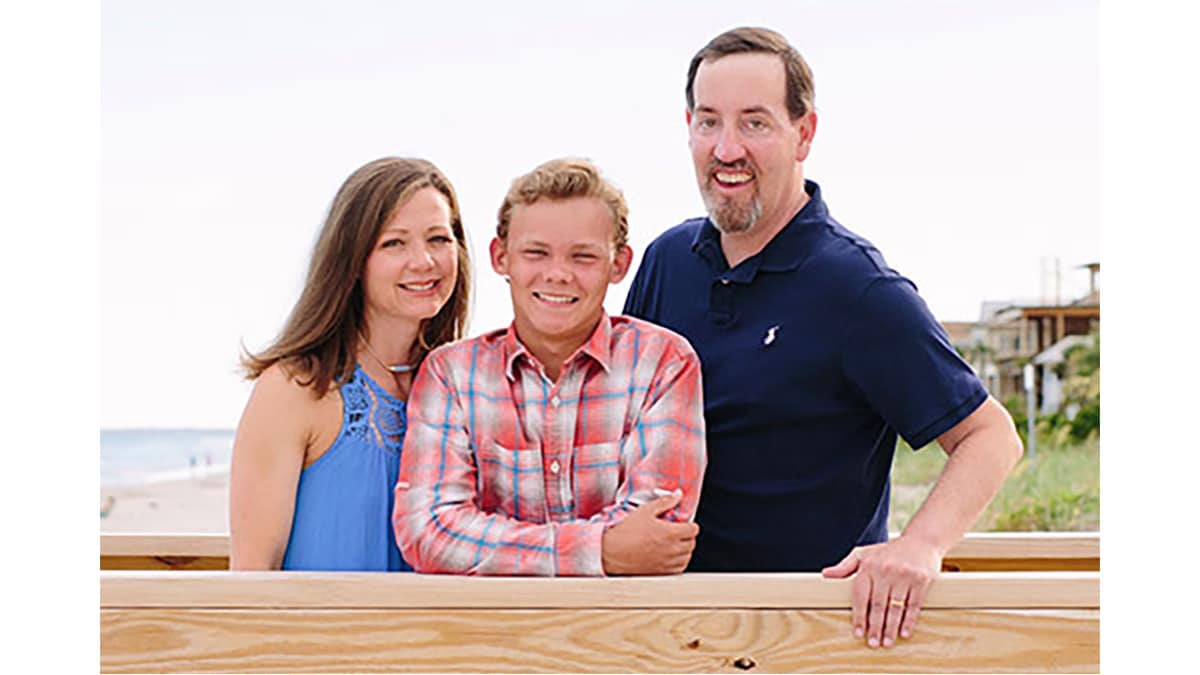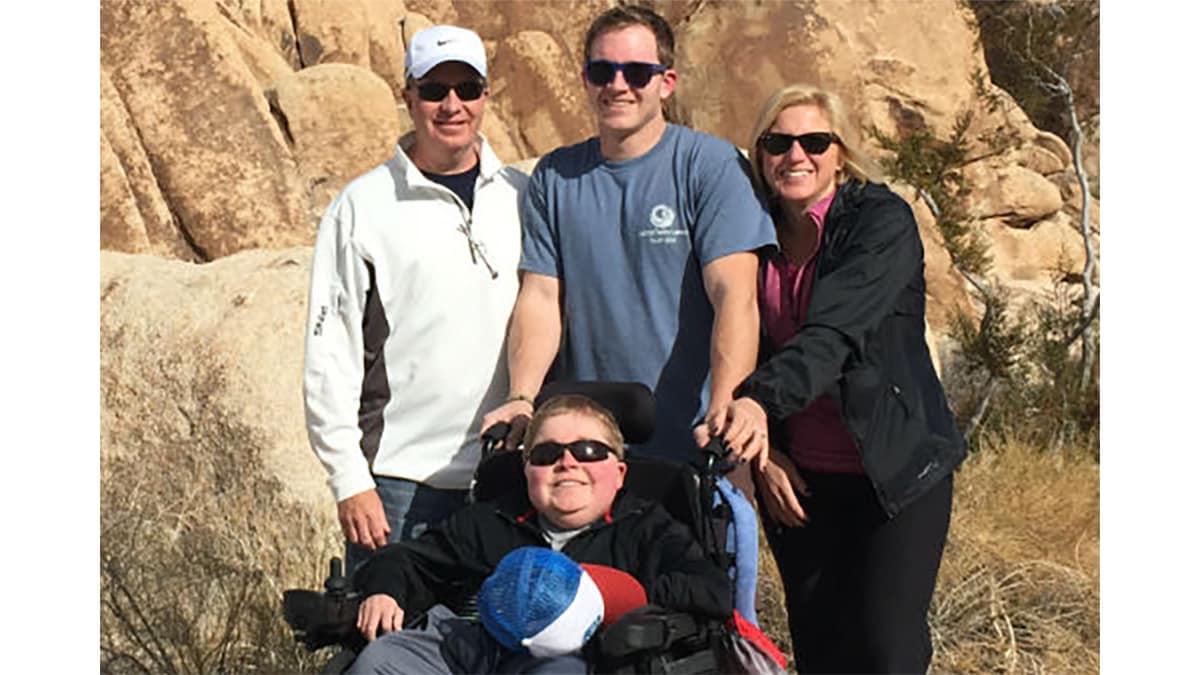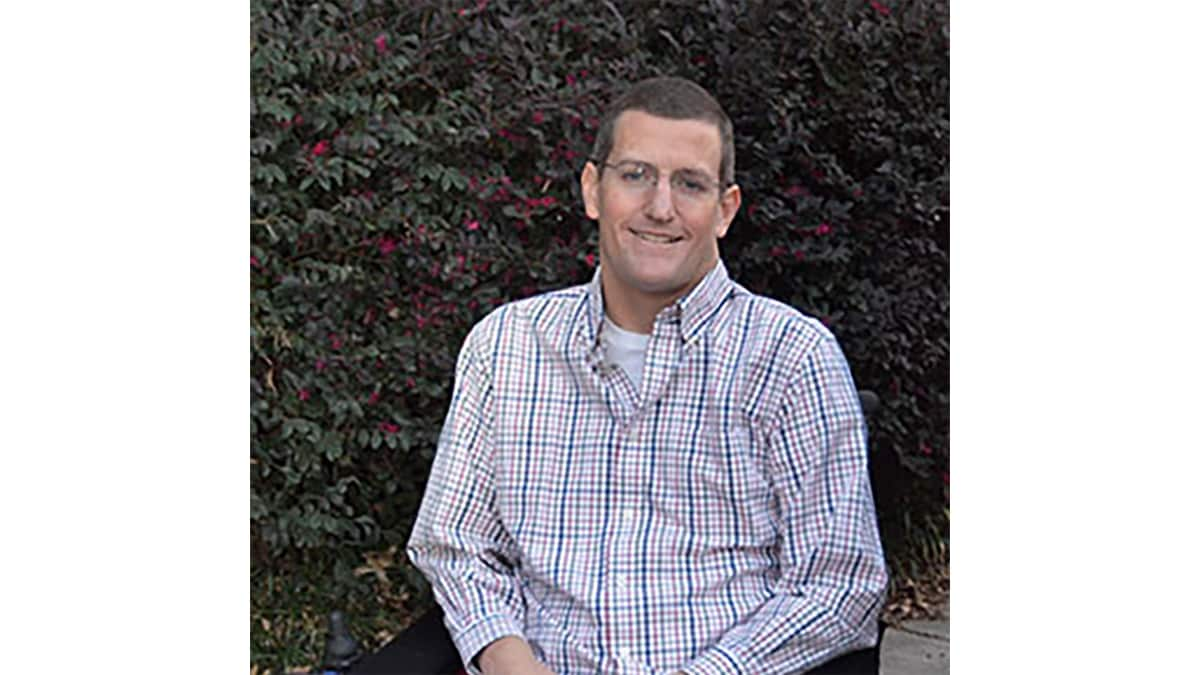At a glance
Paul, Carly, Conor, and Kevin share their experiences living with muscular dystrophy. Their stories give voice to the diagnostic odyssey that can happen to reach a diagnosis and the importance of care coordination.

Paul's story

Myotonic dystrophy is one of the most common types of muscular dystrophy, characterized by progressive muscle weakness. It can affect many parts of the body, including the heart and lungs. Like other rare diseases, it can take years of going to many different doctors to get the right diagnosis.
Paul's diagnosis at age 32 explained many of the seemingly unconnected symptoms he had been dealing with for years. “I probably had some symptoms starting around 18, like hand cramping. Back then I used to just sort of stretch my hands out and go, and not think much about it. I was very active,” says Paul.
He started having heart trouble around age 26. Nothing showed on the tests until he ended up in the emergency room with an extremely high heart rate. “During one of the tests, my heart stopped, and they brought me back. The doctor didn’t know what was causing it, but they decided to put in a defibrillator.”
At age 45, Paul has a pacemaker, sometimes needs a ventilator, and has lost even more strength in his muscles. Everyday things are very difficult for him. "He can't do the pots and pans, put casseroles in the oven, get things off the shelf, or pour milk. Those kinds of things are almost impossible." says Angie, Paul's wife and primary caregiver. Alex (Paul and Angie's teenage son) is a big help.
Carly's story

Like Paul, Carly also lives with myotonic dystrophy. She also had symptoms for many years before diagnosis, but her symptoms are very different. At age 30, Carly has difficulty with her speech, excessive sleepiness, dyslexia, and is beginning to have heart complications. “I can sleep 20 hours straight and still wake up tired” she says.
Carly works full time at a bakery where she’s on her feet and lifting things all day. She’s exhausted when she leaves, but she’s grateful for work that comes with health insurance and other benefits. “I definitely think that my work keeps me going. If I was sitting around all day, it wouldn’t keep me as fit as I am,” says Carly.
Carly knows that things may change for her in the future. "I think I go back and forth between denial and acceptance. It affects everyone differently, so I may never have the same kind of issues. So, it is scary, but it isn't, because nobody can tell me what it will look like."
Carly enjoys the abilities that she still has and does things like zip-lining with her dad. Life with myotonic dystrophy requires careful planning and compromise but is not without joy.
Conor's story

Conor actively advocated for people with disabilities. He told college staff that the new walkway from disability services to another campus building had no ramp. Then, he worked with disability services to get a ramp built. Conor also scored the winning goal in the national championship game of the United States Power Soccer Association. Conor had Duchenne muscular dystrophy.
Having Duchenne meant his muscles, including his heart and muscles that control breathing, got weaker. Better medical care over the years means people with Duchenne are living into adulthood.
Living independently is one part of transitioning to adulthood. Managing medical care is another. Individuals with Duchenne see many different specialists. Care coordination is often the responsibility of the primary caregiver. Conor's mom told doctors about Conor's medicines, treatments, and other care management details.
She shared, "There was a nurse coordinator at the Muscular Dystrophy Association clinic in the children's hospital. [After aging] out of the children's hospital, it was a problem. If Conor went to the emergency room...the first doctor I called was the pulmonologist (a lung specialist)."
As they transition to adulthood, men like Conor begin managing their own care. “I decided that eventually I have to manage my medical care, so I should try to understand it better”, said Conor. People should “teach kids how to manage their medical expenses and their living situations after college. You can make a difference if you really try.”
Conor passed in 2018. CDC thanks his family for sharing his story.
Kevin's story

Kevin was 28 when he was diagnosed with facioscapulohumeral muscular dystrophy, or FSHD. "I don't want my identity to be my muscular dystrophy. I don't want people to think I sit at home and can't do anything. I don't ever want to have a day where I don't have lots to do."
Leading an active life with muscular dystrophy has its challenges, but Kevin takes them all in stride. There was the frustration this former distance swimmer and three-time Junior Olympian felt when he couldn't swim 25 yards.
Volunteer work keeps him busy, and his physical and mental health has improved. He works with the Humane Society and helps lead a fundraiser supporting AIDS vaccine development. He’s registering to be a citizen lobbyist during the next Georgia legislative session.
Kevin was living in Washington, DC when he was diagnosed with FSHD. As muscle inflammation, wasting, and balance got worse, his doctor suggested he move someplace warmer that had FSHD specialists. Kevin chose Atlanta.
"I was looking for a less stressful job with really good insurance. My new company offered long term disability insurance from day one. I was thinking long term without making it sound like I was thinking long term."
Kevin laughs that he turned 40 and got a minivan in the same month. When asked if he thinks about the next 10 years, he says, "I can't go there. I can't stress about the things I can't control. Today my life is great."
